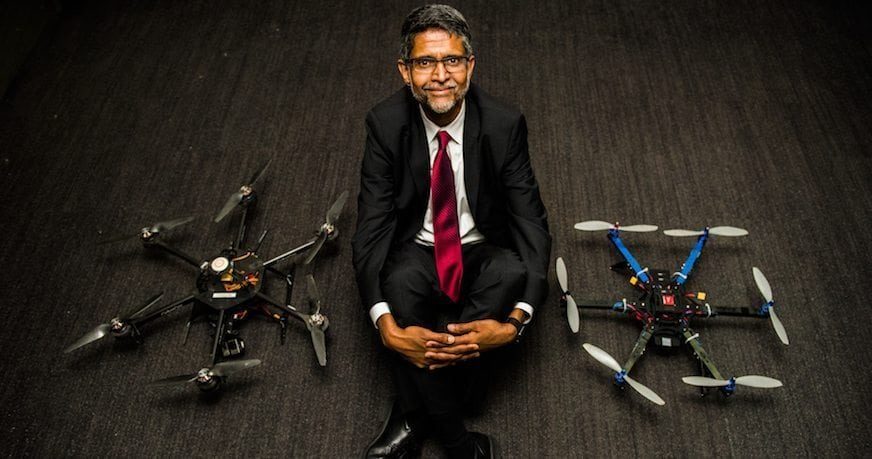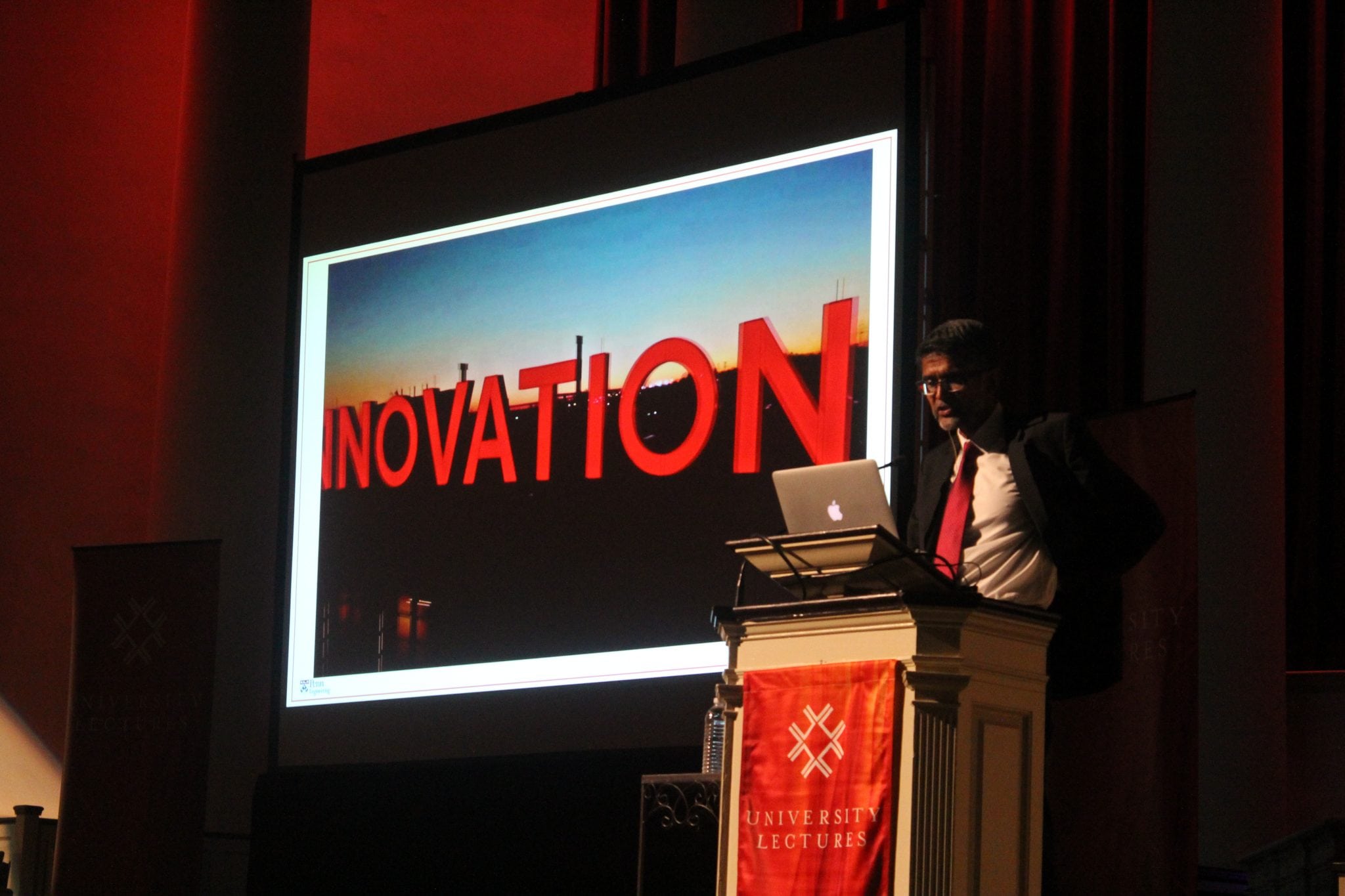Robotics expert Vijay Kumar talks future of drones
Vijay Kumar talks future of drones

It was an unusually warm February night at Hendricks Chapel, and Vijay Kumar made sure to acknowledge that as he thanked the audience that turned out to listen to his speech.
“I’ve been to Syracuse four times, and I’ve learned usually not to come during a month with the letter ‘R’ in its name,” Kumar joked, drawing laughter and applause from the crowd.
A native of northern India, Kumar received his bachelor’s degree in his homeland before getting his Ph.D. in mechanical engineering at Ohio State University. Kumar is currently the dean of Penn Engineering at the University of Pennsylvania, where he and his students work in “Pennovation,” a business incubator and laboratory that brings together innovators and entrepreneurs.
Kumar, featuring as the first speaker in the spring University Lectures series, introduced his audience to the most popular subject of his research: small-scale flying drones and robotic “swarms.”
These robots, properly referred to as unmanned aerial vehicles or UAVs, are commonplace in civil and military use, serving purposes including crop surveys, journalism, reconnaissance, and search and rescue.
Swarms, also known as multirobot systems, consist of a large number of small robots, which can be used for tasks such as repairing machinery too dangerous for humans to attempt, or even to enter the human body to help with certain treatments.
Kumar’s dream for his UAVs is to make them operable indoors and outdoors, in a variety of conditions, for a variety of tasks.
“Small, safe, smart, speedy, and in swarms,” Kumar said. “Those 5 S’s constitute the end result we want from the units.”
Helped by video footage from his labs, Kumar explained the basics behind the small quadcopters his team used. They were capable of flying up to 20 mph and were able to stop on a dime, reverse, fly complicated loops, and hover in midair. The most impressive UAVs used a mixture of cameras and sensors commonly found in smartphones to fly through obstacle courses set up by Kumar and his team.
Kumar also delved into the intelligence behind his creations.
The quadcopters used several different processors, including a Snapdragon semiconductor best known for powering several Samsung smartphones. Kumar described the processors as powering each unit’s “brain” and its decision-making when flying through hostile conditions, such as during a search and rescue mission.
“When we started, we used to use laptop processors, so our UAVs were like flying laptops,” Kumar said. “Now, we’ve made flying smartphones.”
The 55-year-old previously served as assistant director of robotics and cyber physical study at the White House Office of Science and Technology. He is the recipient of numerous engineering awards, including the Institute of Electrical and Electronics Engineers Distinguished Award in 2012.
At the end of his talk, Kumar took several questions from the audience, which was composed mostly of engineers. While a few questions were technical, several members questioned society’s ability to adapt to a more drone-filled world, and the ethics of drones and their effect on the job market.
“I find that when society finds a benefit for these UAVs, their annoyance with them will go away somewhat,” Kumar said.
On the effects of drones and jobs, however, he was a little more evasive. “Questions about the job market are something we take very seriously when we do our work, questions of job displacement and even job destruction.”
Kumar also stated that his main interest in creating robots was in business. Not because of the money, but because it best aids the consumer, he said.
While junior Matt Barni was impressed by the talk as a whole, he wasn’t quite sold on that particular phrase.
“I thought it was interesting what’s driving it is money, but he can sort of direct where he wants his projects to go because of the position he’s in,” Barni said.
Junior Arianna Lee was also interested in aspects of Kumar’s speech from a technical standpoint, contrasting it with her own experiences at Syracuse’s computer science department.
“I took a machine learning class here, and it’s interesting that what he’s doing is basically having the unit forget the data it’s learned so it can take in new data, which is a little different from what I learned,” Lee said.
While Syracuse does not have a drone program that can compare to Pennsylvania’s, independent classes and programs do exist for students wishing to get involved in unmanned flight. The S.I. Newhouse School of Public Communications offered a drone journalism seminar last spring that prepared aspiring reporters to obtain a Federal Aviation Administration license to fly drones for reporting. Lee also said that a drone club was started on campus last semester.
Before concluding, Kumar gave aspiring researchers one last bit of advice when attacking their problems.
“The end goal of our research is to do what everybody else isn’t doing right now,” Kumar said. “I explain it to the students like this; if you work on a problem Google is also working on, you will never finish first.”






